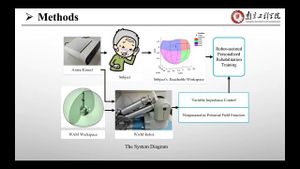Recent research has shed light on a groundbreaking approach to detect antibiotics at ultra-low levels using polymer functionalized zinc oxide quantum dots (ZnO QDs). This development addresses the urgent need to monitor antibiotic pollution due to the rising issue of antibiotic resistance, which poses significant threats to public health globally.
The study, conducted by Akash Kumar Verma and colleagues, outlines the design of an optical nano-sensor capable of detecting varying antibiotic concentrations, particularly focusing on tap water samples. The team synthesized fluorescent ZnO QDs capped with different polymers, namely polyvinyl alcohol (PVA) and polyvinylpyrrolidone (PVP), utilizing a modified sol-gel method. This method ensures effective dispersion and stability of the quantum dots, enhancing their sensitivity and specificity.
Antibiotics, which play a pivotal role in modern medicine, are increasingly detected as environmental contaminants. With India, China, and the USA leading the world in antibiotic consumption, the challenge of measuring these substances accurately has grown. Prevailing analytical methods like high-performance liquid chromatography (HPLC) are often time-consuming and costly, making them impractical for widespread environmental monitoring.
According to the authors, "These sensors are fast, reliable and reproducible, eliminating the need for expensive devices and extensive time for analysis." The optical sensors developed display notable sensitivity, with limits of detection at 0.8 nM for Moxifloxacin and 1.4 nM for Ciprofloxacin. The innovative use of polymer capping not only contributes to stability but also tunes the optical properties of ZnO QDs, facilitating clearer detection of target antibiotics.
Extensive testing demonstrated exceptional specificity: PVA-capped ZnO QDs successfully identified Ciprofloxacin, distinguishing it from other interfering substances, whereas PVP-capped ZnO QDs effectively singled out Moxifloxacin. The optical absorption studies corroborated these findings, showing discernible changes when the quantum dots interacted with the respective antibiotics.
Characterization of the synthesized quantum dots involved various spectroscopic techniques enabling the researchers to ascertain their structural attributes. Fourier-transform infrared spectroscopy (FTIR) confirmed the successful functionalization of the QDs, and zeta potential measurements revealed the enhancement of positive charges on the polymer-capped quantum dots, which is pivotal for their interaction with antibiotic molecules.
The fact remains clear; effective detection of antibiotic contamination is imperative for safeguarding public health. The polymer-functionalized ZnO quantum dots stand as formidable candidates for developing cost-effective and highly sensitive optical sensors. The practicality of these sensors extends beyond laboratory settings, as they were successfully tested with spiked tap water samples, demonstrating their potential application for real-time monitoring of antibiotic levels.
"Polyvinyl alcohol (PVA) functionalized ZnO QDs showed excellent specificity toward Ciprofloxacin, whereas PVP capped ZnO QDs were selective for Moxifloxacin," the authors state. The possible application of this technology encompasses numerous fields—from environmental health to clinical settings—indicating the necessity for continued research and evaluation for potential deployment.
This study lays down the foundations for future exploration, primarily focusing on more extensive field tests and adaptations of these nano-sensors for detecting various contaminants. The innovative use of polymer-functionalized quantum dots could revolutionize monitoring protocols, ensuring the efficacy of therapeutic antibiotics and mitigating the rise of resistant strains.



